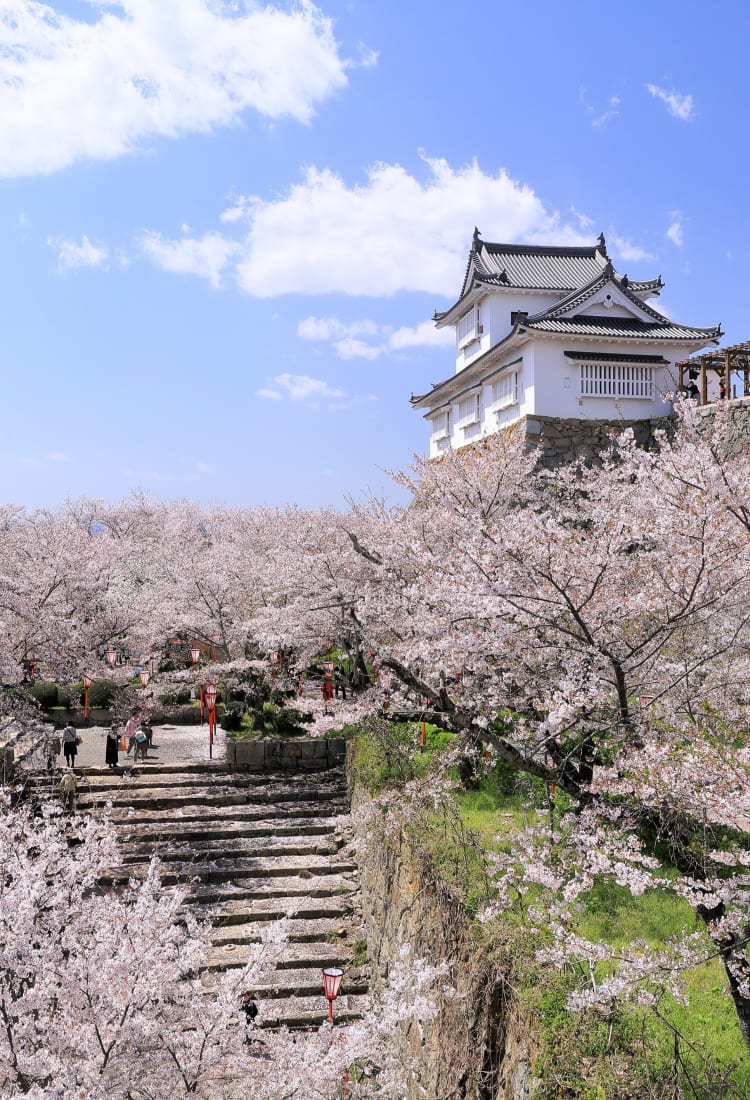

OKAYAMA Tsuyama & Mimasaka A martial arts mecca with a castle, a racetrack and highland outdoor fun
A martial arts mecca with a castle, a racetrack and highland outdoor fun
Tsuyama and Mimasaka are two towns steeped in history, culture and legend. Tsuyama is the larger of the two, but the region is known by the name of the other smaller town, Mimasaka-no-Kuni, meaning the "Land of Mimasaka." The whole of northern Okayama Prefecture makes up this ancient domain, where Miyamoto Musashi, one of the most famous samurai warriors, was born. The founder of Shorinji kempo, So Doshin, was also born here.
The region is an excellent destination for campers, outdoor sports enthusiasts and onsen fans, and there are some lovely gardens and the ruins of a castle to explore. You can also drive on a genuine Formula One track.
Don't Miss
- Visiting the Musashi Budokan
- Driving on an authentic Formula One track
- Having a picnic in Kakuzan Park under the ruins of Tsuyama Castle
How to Get There
The Tsuyama/Mimasaka area takes up a large part of northern Okayama Prefecture. Access to the area is easiest from Tsuyama Station, from which you can use buses to get around.
A train from Okayama Station to Tsuyama Station will take about 70 to 90 minutes depending on the type of train and time of day.
Renting a car from Okayama City is a great option, since it will give you more freedom to use Tsuyama as a base where you can drive to Mimasaka, Ohara, Maniwa, or Tottori . There are several car rental facilities near Okayama Station.
Birthplace of two of Japan's famous martial artists
Mimasaka is a rural city rich in history and culture. The great swordsman, philosopher and artist Miyamoto Musashi was born in what is now Mimasaka. The Musashi Budokan is a grand structure where his spirit lives on. Musashi's birthplace and the Musashi Budokan are two excellent locations to add to your itinerary.
The founder of Shorinji kempo, So Doshin, was also born in Mimasaka, and there's a memorial hall in his honor in the Sakuto area of the city. Sakuto is home to Shiramizu Waterfall and the Sakuto Museum of Fine Art, both of which are sightseeing spots popular with couples.
The call of the highlands and racing thrills
Continuing your journey, visit the Oashi Highlands, where you can enjoy camping, hot springs and the great outdoors any time of the year. The nearby Okayama International Circuit is an authentic Formula One course where Michael Schumacher once raced to victory. You can take your own car or motorcycle out for a lap or two.
Soak in history or just the hot springs
With a 1,200-year-old history, the relaxing waters of Yunogo Hot Spring attract throngs of visitors each year. The spa offers both public and private bathing options. Both overnight and day visits are welcome, and aromatherapy and craft-making workshops are available if you wish to spend additional time here.

Tsuyama Castle during springtime
Tsuyama was a castle town for centuries, but after the Meiji Restoration the city's castle met the same fate as many throughout Japan and the castle was dismantled. Despite this, the city retains the charm of a typical castle town, with many sightseers coming to visit its ruins.
The Yoshii River, which runs through the city, connected the town to the outside world. It's still a place where locals go to unwind and celebrate. Kakuzan Park surrounds the castle grounds and is considered a great place for viewing cherry blossoms in Okayama.

Reflecting the gardens of Kyoto
Another visual wonder in Tsuyama is Shurakuen Garden , which was designed to resemble the gardens of Kyoto. It was completed in the mid-17th century and captures nature in an idyllic form.
One of the best time to visit Tsuyama is in summer during the Tsuyama Noryo Gongo Festival. Held on the banks of the Yoshii River, vibrant summer kimono and festival attire bring summer to life, and food stalls with local delicacies line the river.





























































